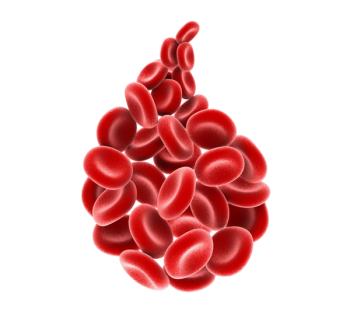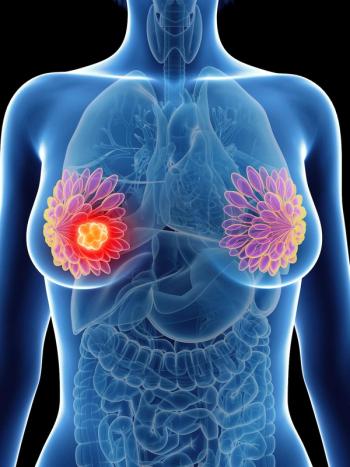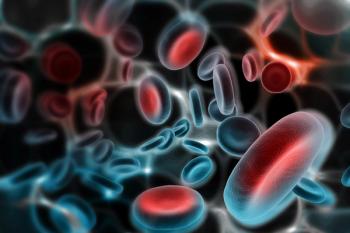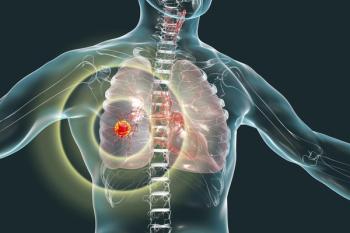
RP1/Nivolumab Yields Promising Antitumor Activity in Non-Melanoma Skin Cancer
Patients with non-melanoma skin cancer achieved promising antitumor activity following treatment with RP1 and nivolumab.
Treatment with RP1 and nivolumab (Opdivo) resulted in promising antitumor responses and a well-tolerated safety profile in a population of patients with non-melanoma skin cancer (NMSC), according to findings from the phase 2 IGNYTE trial (NCT03767348) that were presented at
Patients with cutaneous squamous cell carcinoma (CSCC), basal cell carcinoma (BCC), Merkel cell carcinoma (MCC), and angiosarcoma achieved at least a partial response (PR) when receiving the combination therapy.
“For CSCC, we are most excited about the remarkable complete response [CR] rate, up to almost 50% CR,” Jiaxin Niu, MD, from the Banner MD Anderson Cancer Center, said in his presentation.
The results Niu discussed were from the NMSC portion of the open-label, multicenter, phase 1/2 IGNYTE trial where patients received the combination RP1, an enhanced potency oncolytic herpes simplex virus 1 (HSV-1), and nivolumab, an anti–PD-1 monoclonal antibody, but did not cover the other solid tumors evaluated, or the RP1-only arm of the trial.
“Oncolytic virus has long been studied in cancer immunotherapy,” Niu explained. “So, the idea is using this bioengineered virus (because it) can preferentially infect and replicate in cancer cells to promote immunogenic cell death.” RP1 had previously shown potent fusogenic glycoprotein-enhanced antitumor activity and immunogenic cell death in preclinical studies.
When assessed in the IGNYTE trial, 30 patients with NMSC who had not received an anti–PD-1 or anti–PD-L1 therapy were given RP1 at 1 × 106 PFU/mL for their first dose in cycle 1, then 1 × 107 PFU/mL for all subsequent doses plus nivolumab at 240 mg every 2 weeks for cycles 2 through 8, followed by nivolumab maintenance.
Of the 30 patients, 15 had CSCC, 4 had BCC, 4 had MCC, and 5 had angiosarcoma. Objective response was observed in 9 patients (60.0%) with CSCC, 1 (25%) with BCC, 3 (75.0%) with MCC, and 3 (60.0%) with angiosarcoma at the data cutoff of June 3, 2021. Only patients with CSCC achieved CR, while none of the patients in the other subtypes categories experienced CR. Two patients (13.2%) with CSCC, 1 (25.0%) with BCC, 3 (75.0%) with MCC, and 3 (60.0%) with angiosarcoma had a PR. Progressive disease occurred in 4 patients (26.7%) with CSCC and 1 patient with BCC, MCC, and angiosarcoma, respectively.
“Seven patients [(46.6%) with CSCC] achieved CR, which is actually unprecedented when it comes to immunotherapy,” Niu explained. “I was fortunate to be one of the investigators to study cemiplimab in CSCC. I can tell you from that phase 2 study, out of 60 patients, only [4] achieved complete remission, which was equivalent to 7%, so this is actually striking to us.”
A waterfall plot showed deep responses in most patients, and the duration of response was prolonged. Some patients were still in remission after 2 years of treatment. Furthermore, the median duration of response has not been reached at the time of the data cutoff.
The safety results were of the NMSC group and melanoma group combined (n = 69). Most of the adverse events (AEs) were grade 1 or 2. All grade AEs were observed in 59 patients (89.5%). Grade 4 and 5 AEs occurred in 1 patient and were regarded as related to nivolumab. Grade 3 or more AEs were seen in 19 patients (27.5%) and included AEs such as fatigue, pyrexia, and decreased appetite/diarrhea.
“These data further support the ongoing trial, the phase 2 CERPASS study, using RP1 oncolytic virus plus cemiplimab versus cemiplimab alone in patients with CSCC [NCT04050436],” Niu concluded. “I believe a substantial proportion of patients will come from the head and neck population, just like the original cemiplimab study—in that cohort 60% tumor arose from the head and neck region.”
Reference
Niu J, Milhem MM, Vanderwalde AM, et al. Safety and efficacy of RP1 + nivolumab in patients with non-melanoma skin cancer of the head and neck: results from IGNYTE phase 1/2 multi-cohort clinical trial. Presented at: 2022 Multidisciplinary Head and Neck Cancers Symposium; February 24-26, 2022; Phoenix, Arizona. Accessed February 25, 2022. https://bit.ly/3shikch
Newsletter
Stay up to date on recent advances in the multidisciplinary approach to cancer.


















































































